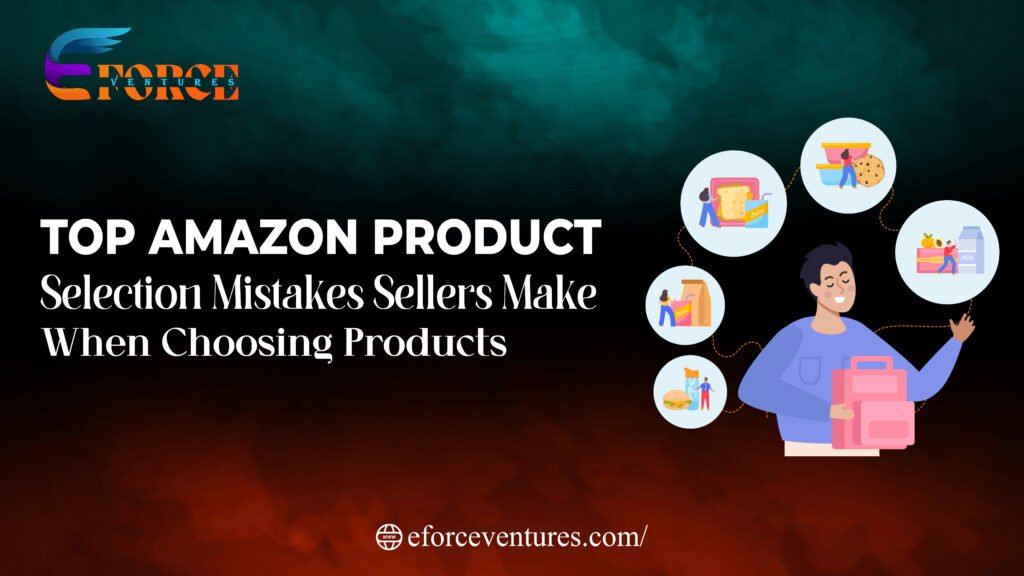Selling on Amazon has proven to be a lucrative venture for many. However, with the vast potential comes a myriad of pitfalls, especially for newcomers. While Amazon’s seller guidelines are straightforward, many sellers still make mistakes that can significantly impact their success on the platform.
In this article, we’ll dive into some of the most common mistakes Amazon sellers make, particularly when choosing products to sell. Avoiding these pitfalls can mean the difference between thriving and struggling on the world’s largest eCommerce marketplace.
1. Relying Solely on Product Research Tools
Many beginner Amazon sellers fall into the trap of using widely available product research tools as their primary strategy for finding products to sell. While these tools are useful, they’re also accessible to everyone else. This means that you’re not the only one zeroing in on the same trending products.
By using the same research methods, filters, and tools as everyone else, you’re likely entering a market that’s already becoming oversaturated. The result? You’ll face stiff competition, potentially driving down your profit margins. Instead of solely relying on tools, consider exploring under-the-radar niches and work with an expert to develop unique strategies for product selection.
2. Selling Generic Products Without Differentiation
One of the biggest mistakes sellers make is offering the exact same products as everyone else, with no distinguishing factor. In a competitive marketplace like Amazon, simply offering a product isn’t enough. You need to give customers a reason to choose your product over competitors.
Whether through better quality, unique packaging, or enhanced features, differentiate your offering. A strong Unique Selling Proposition (USP) can make all the difference. Think about improving the taste, design, or functionality of a product to appeal more to your target audience.
3. Delivering Subpar Products
Investing time and money into sourcing a product, only to offer a below-average version of it, is a surefire way to hurt your Amazon business. A poor product will lead to bad reviews, which in turn will diminish your reputation and sales.
Always ensure that the products you sell meet a high standard of quality. Aim for at least 4.5-star ratings, as consistent positive reviews will help your product maintain visibility and credibility. Long-term success on Amazon hinges on providing exceptional quality that garners positive feedback from customers.
4. Entering Oversaturated Markets
Not conducting thorough product research is a major error. Some sellers randomly select a niche or product without considering the level of competition. For instance, jumping into a market like Men’s Tees with thousands of sellers is risky, especially if you’re a newcomer.
It’s essential to find less saturated niches where you can carve out space for your brand without immediately being swallowed up by established competitors. Conduct deep research to identify markets where demand is growing but competition remains manageable.
5. Failing to Vet Suppliers
Your supplier is one of the most critical components of your Amazon business. Yet, many sellers fail to properly vet their suppliers, which can lead to poor product quality, shipping delays, and even overcharging. Ensuring that your supplier is reliable, experienced, and has a track record of meeting deadlines is essential.
Always do a background check on your suppliers, read reviews, and compare them with others in the industry. Trusting an unreliable supplier can lead to long-term problems that hurt your bottom line.
Other Common Amazon Seller Mistakes
Beyond product selection, here are a few more pitfalls that Amazon sellers encounter:
Overstocking
It’s tempting to bulk order to take advantage of supplier discounts. However, overstocking can lead to high storage fees and even liquidation losses if products don’t sell as quickly as expected. Keep a lean inventory and have a supplier ready to replenish stock as needed.
Poor Keyword and Listing Optimization
Many sellers overlook the importance of effective keyword usage, titles, and images in their listings. Make sure to optimize your product listings with relevant keywords, clear titles, and professional product images. This will boost your rankings and visibility on Amazon.
Lack of Excellent Customer Service
Amazon customers value great service, and it can make or break your business. Offering stellar customer support can keep customers coming back and protect your reputation. Whether you handle it yourself or use Amazon FBA, make sure your customers feel valued.
Overcharging for Shipping
Buyers on Amazon expect competitive or free shipping. Overcharging for shipping can discourage sales and result in negative feedback. Instead, work shipping costs into your product pricing, but ensure the final price remains competitive.
Delayed Shipping
Late deliveries can frustrate customers and lead to negative reviews. Make sure to optimize your shipping process and communicate realistic delivery times. If you handle fulfillment, ensure fast delivery times to avoid customer dissatisfaction.
Conclusion
Selling on Amazon requires strategic planning and careful execution, especially when choosing the right products. By avoiding these common mistakes and staying proactive in how you approach product research, supplier vetting, and customer service, you can set yourself up for success in the competitive Amazon marketplace.
Looking for expert advice on scaling your Amazon business? At Eforce Ventures, we offer tailored solutions to help Amazon sellers optimize their product selection, listings, and overall strategy to thrive in the eCommerce space. LinkedIn







